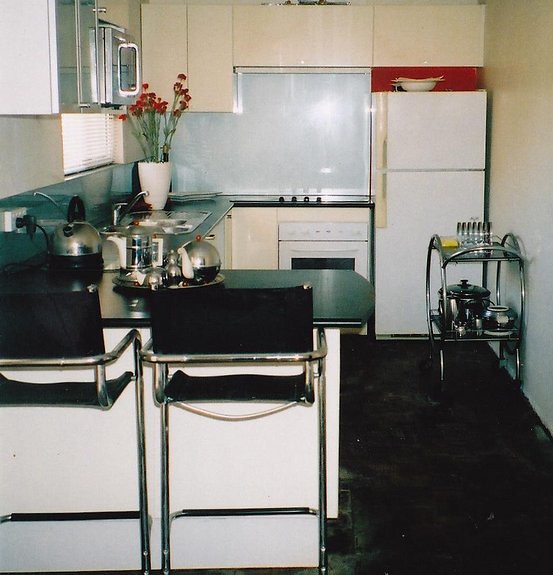kampkatz
Practically Family
- Messages
- 715
- Location
- Central Pennsylvania
Binki,
Interesting fireplace. Is it functional or just decorative?
Interesting fireplace. Is it functional or just decorative?

Tinseltown said:Anyone?
Is it possible to get a more detailed photo of things like the floor and cupboards?
I would like to keep the chairs original, but the problem is that three of the chairs are in great condition and the fourth is wrecked. They were apparently hung up in a barn in Boston, NY for 30 years, with one of them being right under a big leak, so it was shot. I took it anyway and am going to have it re-chromed, but in order for them to match again I will have to reupholster all of them. I got my feet wet in this field already with a buddy's chairs and did a swell job so once I find a fabric that stands out I'll probably get around to it, but for now I am in no rush...



 John Lofgren Monkey Boots Shinki Horsebuttt - $1,136 The classic monkey boot silhouette in an incredibly rich Shinki russet horse leather.
John Lofgren Monkey Boots Shinki Horsebuttt - $1,136 The classic monkey boot silhouette in an incredibly rich Shinki russet horse leather.  Grant Stone Diesel Boot Dark Olive Chromexcel - $395 Goodyear welted, Horween Chromexcel, classic good looks.
Grant Stone Diesel Boot Dark Olive Chromexcel - $395 Goodyear welted, Horween Chromexcel, classic good looks.  Schott 568 Vandals Jacket - $1,250 The classic Perfecto motorcycle jacket, in a very special limited-edition Schott double rider style.
Schott 568 Vandals Jacket - $1,250 The classic Perfecto motorcycle jacket, in a very special limited-edition Schott double rider style. 







My dad gave me a bunch of old silverware, obviously in no good condition. This was a good chance to experiment a bit with silver cleaning methods.
I got a liquid silver cleaner from my grandma's cupboard - probably very aggressive chemistry (the smell!). The alternative to that is good old aluminum foil, salt and water - less effort and no chemistry.
But is it better? I find those items cleaned with alu/salt look cleaner at first sight, but have a yellowish tone if you look closer. And don't the black details - which are removed by alu/salt cleaning and stay with chemical cleaning - have a certain charm to them?
What do you think?
